Wisdom Tooth Cyst: A Potential Complication Explained
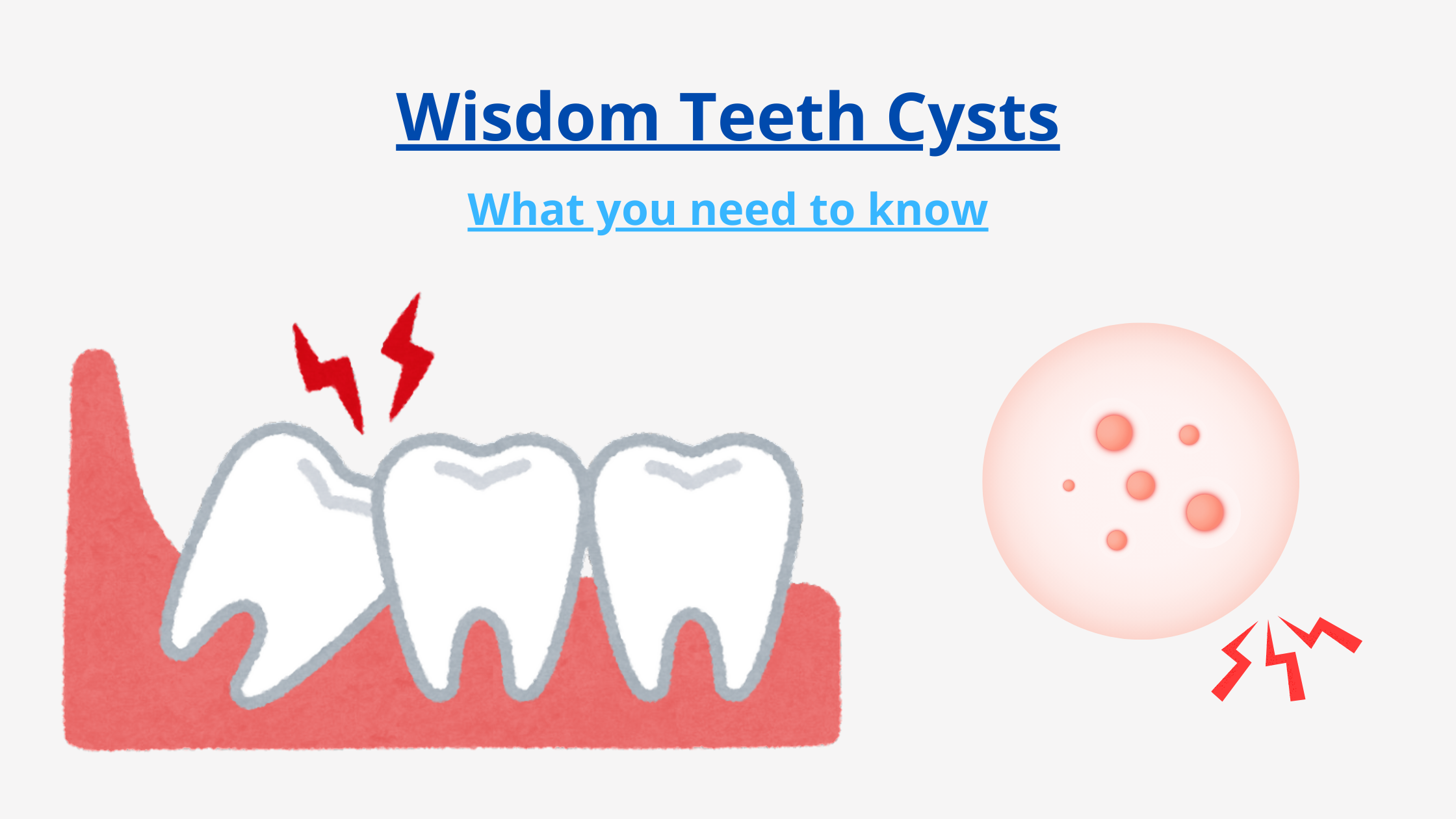
Did you know that some wisdom teeth can silently grow cysts and tumors in your jawbone? This may sound scary, but in most cases, these growths are harmless and benign.
However, if left untreated, they can lead to long-term problems—especially when they continue to grow without symptoms.
In this article, we’ll take a closer look at a fairly common complication of wisdom tooth development: cyst formation.
However, if left untreated, they can lead to long-term problems—especially when they continue to grow without symptoms.
In this article, we’ll take a closer look at a fairly common complication of wisdom tooth development: cyst formation.
In this article:
1. What exactly are jaw cysts?
2. A cyst around a wisdom tooth is not uncommon
3. Different types of cysts can occur around wisdom teeth
4. Symptoms of a cyst around a wisdom tooth
5. The different growth stages of wisdom teeth cysts
6. Can a wisdom tooth cyst turn into cancer?
7. Treating a wisdom tooth cyst
8. Can a wisdom tooth cyst come back after treatment?
What exactly are jaw cysts?
A cyst is like an unusual bag filled with air, liquid, or other substances that can form in any part of the body. It's essentially an abnormal cavity lined by so-called epithelial cells.Epithelial cells line different surfaces of the body, including the skin, mouth, digestive tract, and certain organs. When these cells grow too much and surround a central space, they create a three-dimensional mass that we call a cystic cavity.
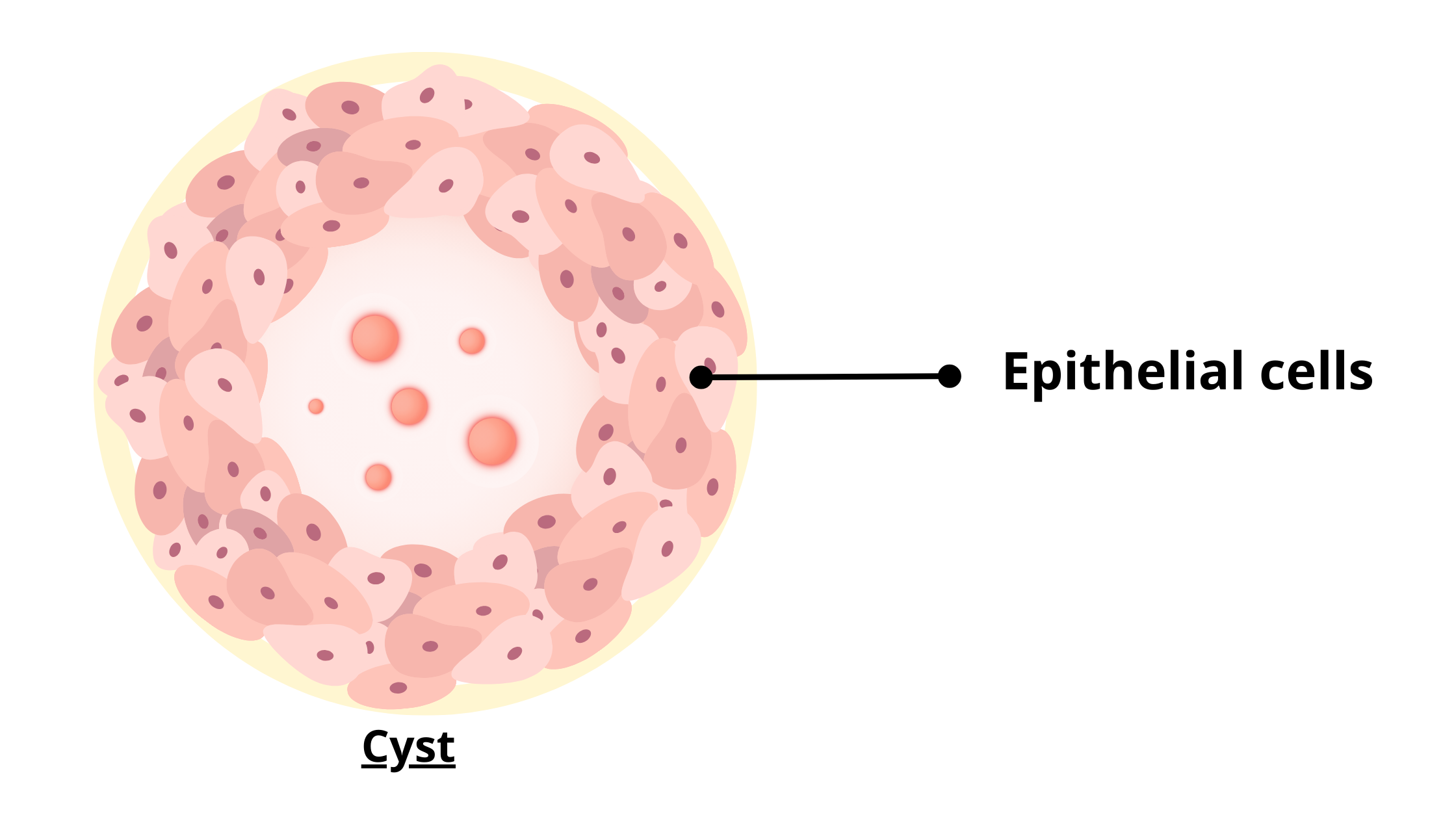
Jaw cysts follow the same rule. They are abnormal cavities named after the type of epithelium covering them.
For example, those arising from the growth of epithelial cells involved in the development and growth of teeth are called odontogenic cysts. These are the most common in the face and mouth regions.
Alternatively, if a cyst on the jaw comes from a different kind of epithelial cells, it's called a non-odontogenic cyst.
A cyst around a wisdom tooth is not uncommon
It's not unusual for a cyst or tumor to form around a wisdom tooth, especially when stuck in the jawbone (impacted). These often result from an overgrowth of the cells involved in wisdom tooth formation, and can keep getting bigger over time.About 5.3% of impacted wisdom teeth develop abnormal growth, of which 4.4% are odontogenic cysts and 0.5% tumors.
Tumors and cysts may share similar symptoms, but they're distinct. Tumors result from the abnormal growth of cells that form a mass rather than a cavity.
The chances of a tumor coming from a wisdom tooth are very low, and when they do occur, they are usually benign, meaning they are not cancerous.
Different types of cysts can occur around wisdom teeth
Before appearing, all teeth, including wisdom teeth, develop inside the jawbone within a sac known as the dental follicle. When this sac fills with fluid, it transforms into a cyst, hence the name follicular cyst (also known as dentigerous cyst).The dentigerous cyst is most frequently associated with impacted wisdom teeth. It can also affect any other tooth that hasn't yet emerged in the mouth.
This cyst appears attached to the tooth and has the potential to grow quite large, covering the entire top part of the tooth (the crown). Also, being in the way, the cyst can stop the tooth from coming out.
Furthermore, it can sometimes push on neighboring teeth, causing many problems.
What does a dentigerous cyst look like?
In dental X-rays, it shows up as a single, dark, clearly outlined round shape around the tooth's crown. In the picture below, you can see how the dentigerous cyst is attached to a wisdom tooth that hasn't completed its growth yet.
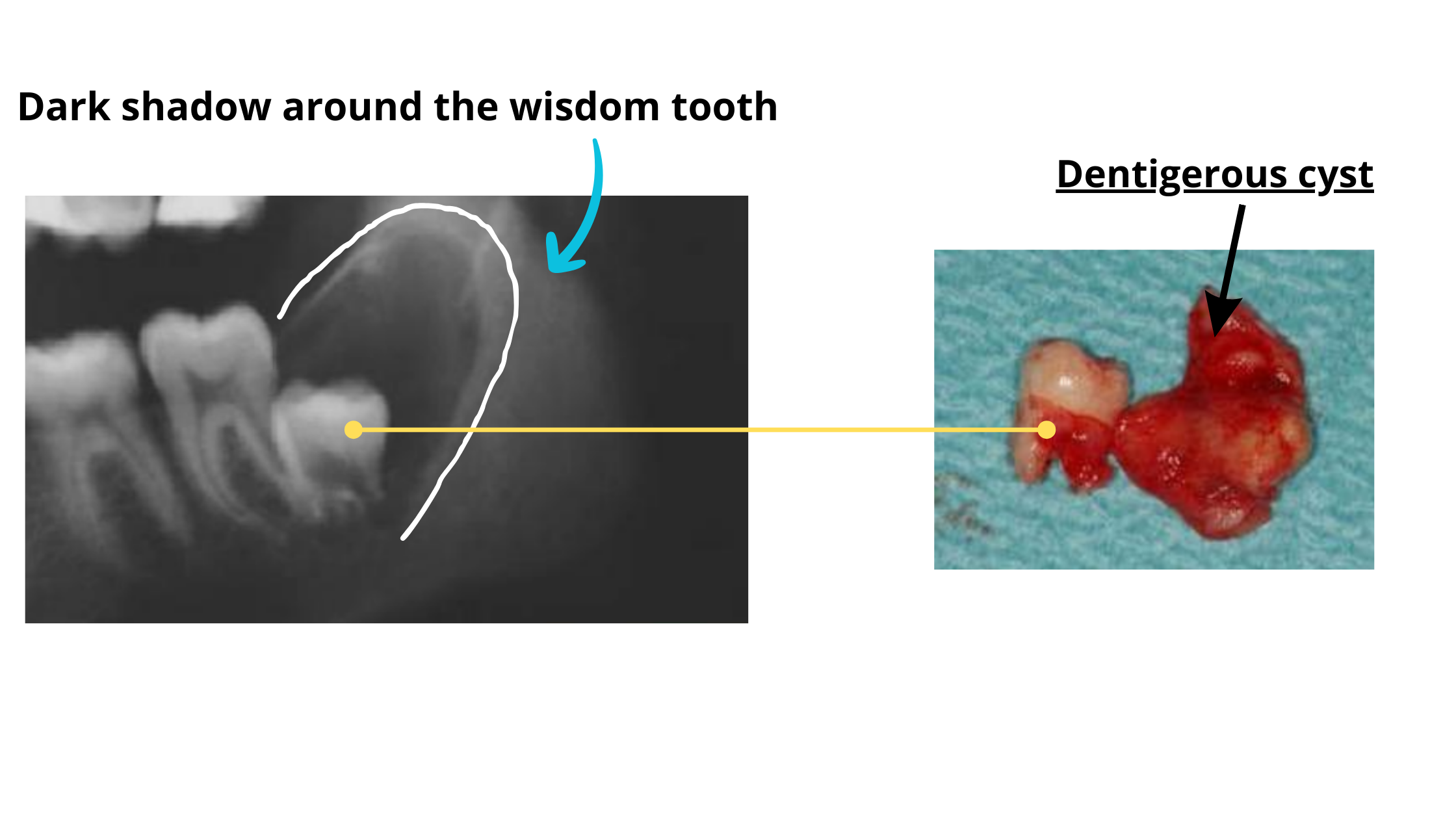
Cysts aren't just tied to the wisdom teeth development and growth process; inflammation can also trigger them, as is the case with paradental cysts.
These cysts typically appear on partially emerged wisdom teeth. When a tooth breaks through the gum at an awkward angle, bacteria and food can build up in the open space between the tooth and gum, causing inflammation known as pericoronaritis.
In response, nearby epithelial cells multiply to contain the inflammation on one side of the tooth, forming what we call a paradental cyst.
What does a paradental cyst look like on X-rays?
It shows up as a clear, dark image on one side of the tooth, taking on the shape of a semicircle.
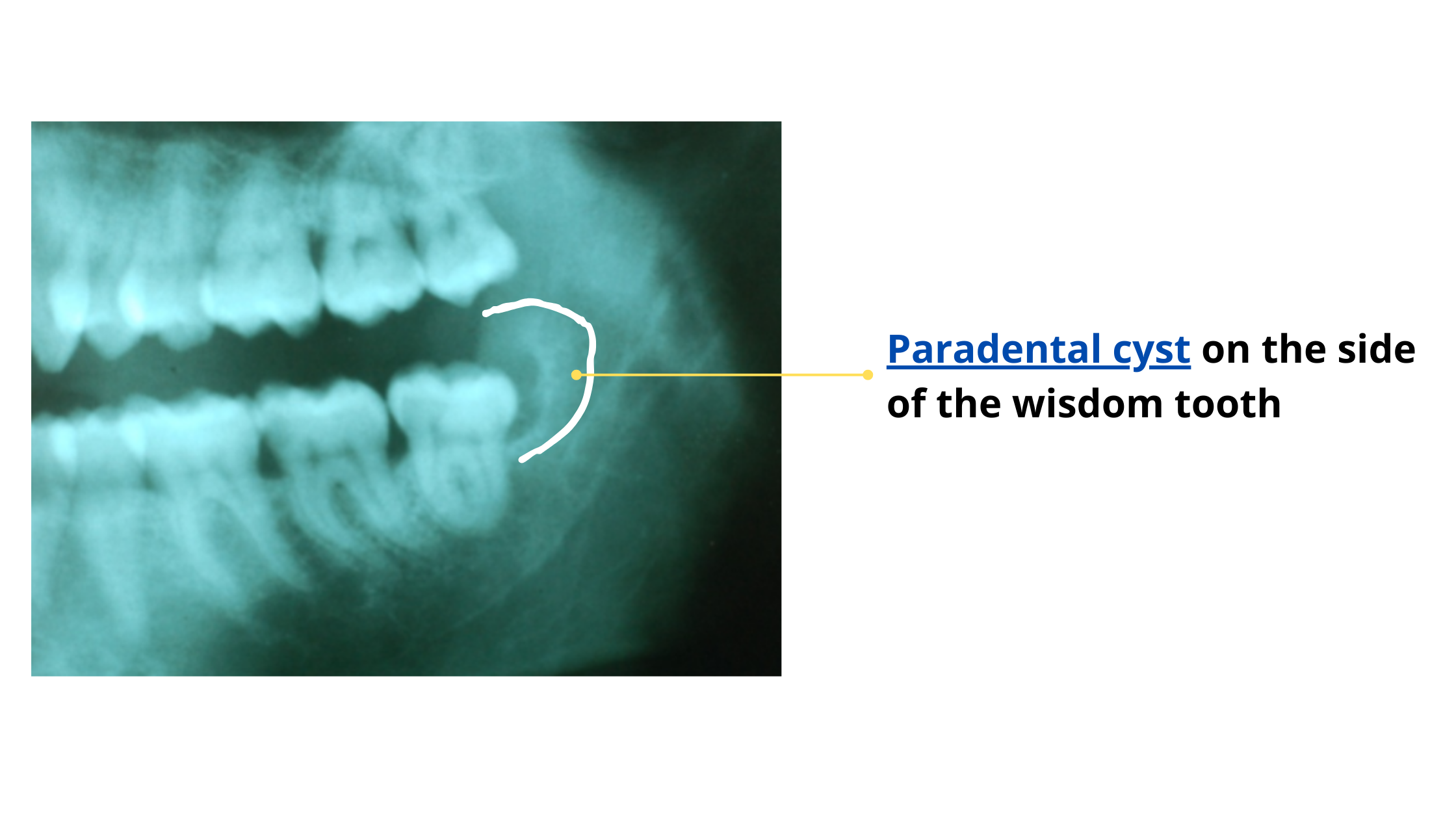
Another situation is when a cyst forms after wisdom tooth removal. It's called a residual cyst. These are often inflammatory in nature and usually happen from a previously existing cyst that was either missed or poorly treated during the procedure.
Symptoms of a cyst around a wisdom tooth
Wisdom tooth cysts typically don't show symptoms initially. You might only notice something unusual in two scenarios: when the cyst grows to a significant size or if it becomes infected. Here are the potential symptoms to be aware of:- Jaw discomfort or a feeling of pressure.
- Nearby teeth may shift or become looser if the cyst puts pressure on them.
- Facial and jaw changes can occur when the cyst reaches a considerable size.
- If the cyst becomes infected, you may observe redness and pus leakage.
The different growth stages of wisdom teeth cysts
The growth stages of jaw cysts, whether arising from a wisdom tooth or another cause, progress very slowly. It can take several years before the growth becomes noticeable.Cysts expand essentially by breaking down the surrounding bone as they increase in size. This happens because of the pressure they exert and the release of some chemicals that can gradually erode the bone.
But again, it's not an overnight process. It can take years or even decades. Overall, these are the different stages of cyst growth:
- Initiation Phase: Initially, there is no visible swelling or jaw deformation. The cyst remains asymptomatic, and only an X-ray can reveal its presence.
- Deformation Phase: As the cyst enlarges, swelling becomes more apparent, ranging from a small pea to the size of an egg. The swelling feels hard to the touch, resulting from the external expansion of the bone.
- Outgrowth Phase: The cyst's growth thins the surrounding jawbone and extends to the gums, making it more palpable. The swelling becomes softer and more depressible like a balloon. At this point, the cyst may cause facial deformity.
- Fistulation Phase: As the cyst reaches the gum, it continues to progress outward, creating a channel or tube in the gum known as a fistula. This serves as a pathway for the cyst's liquid contents to drain outside the mouth.
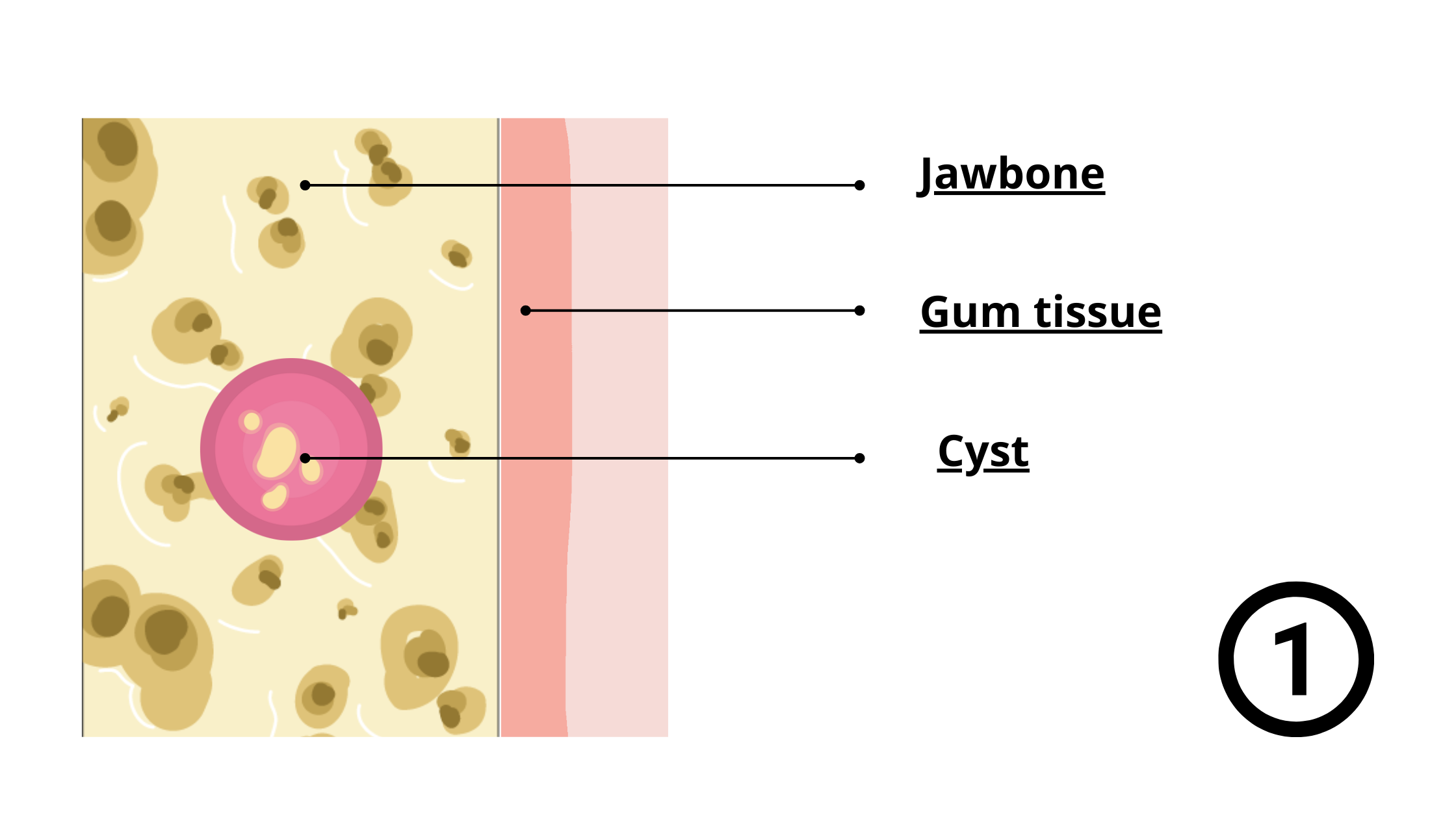
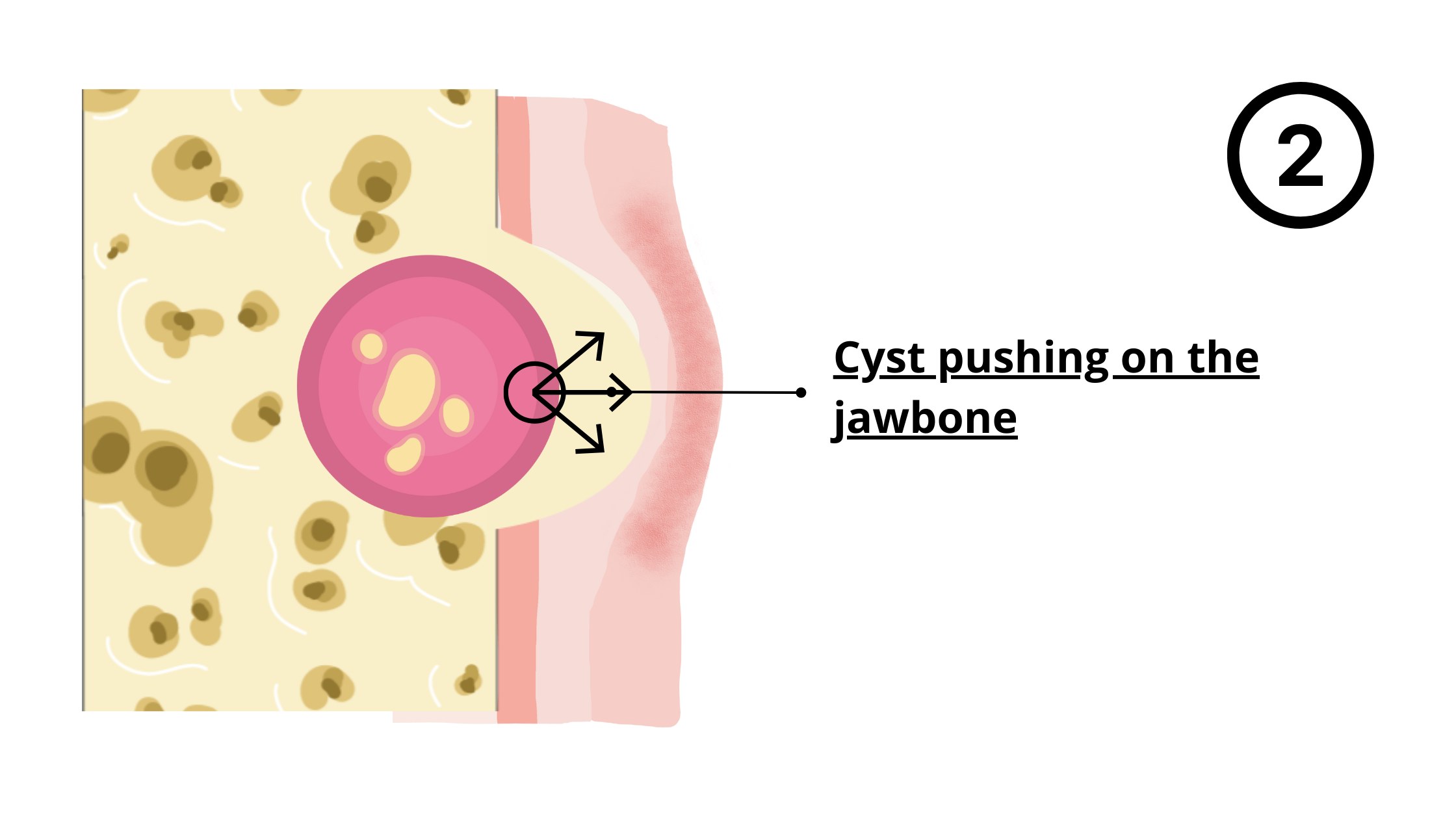
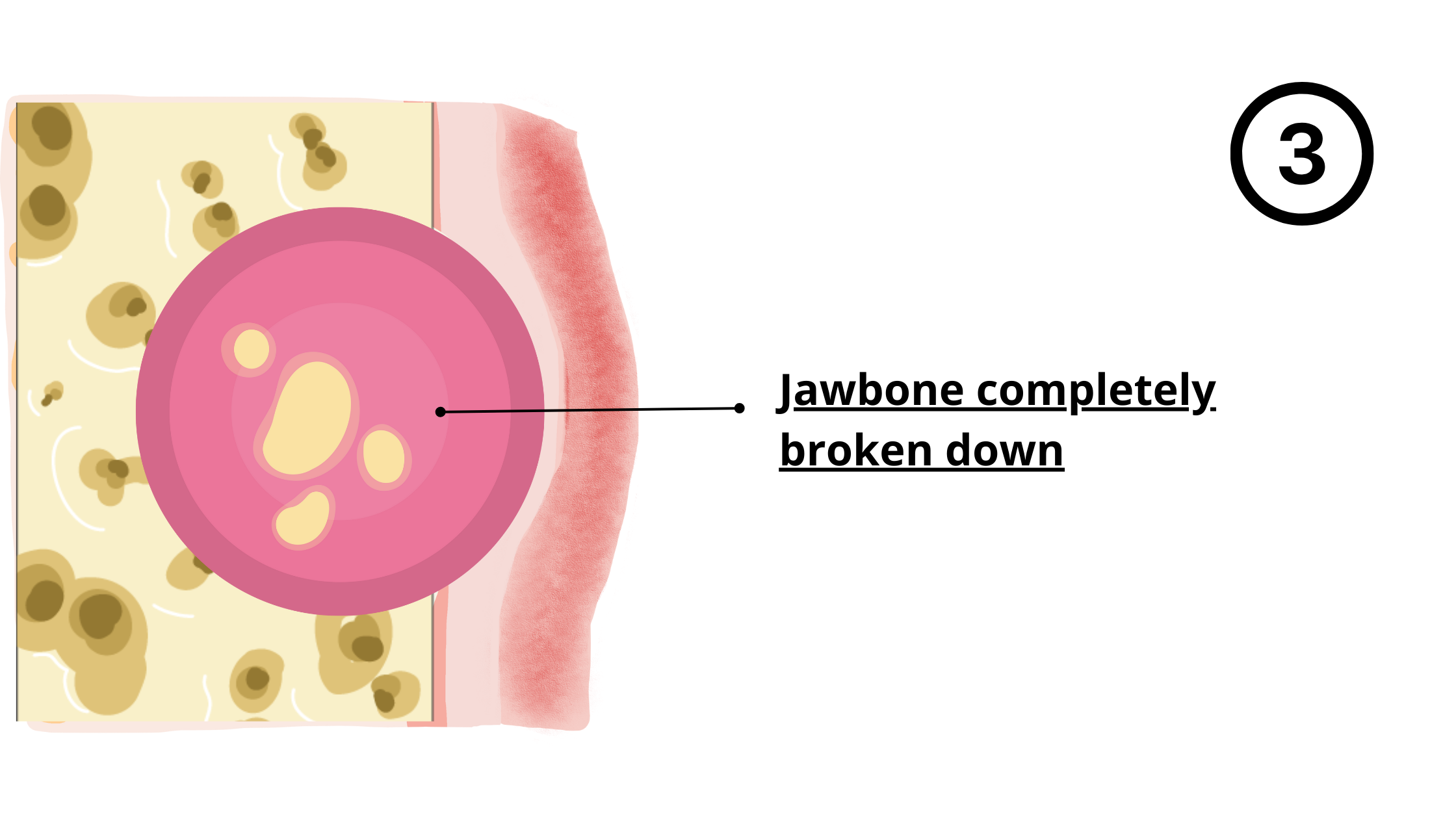
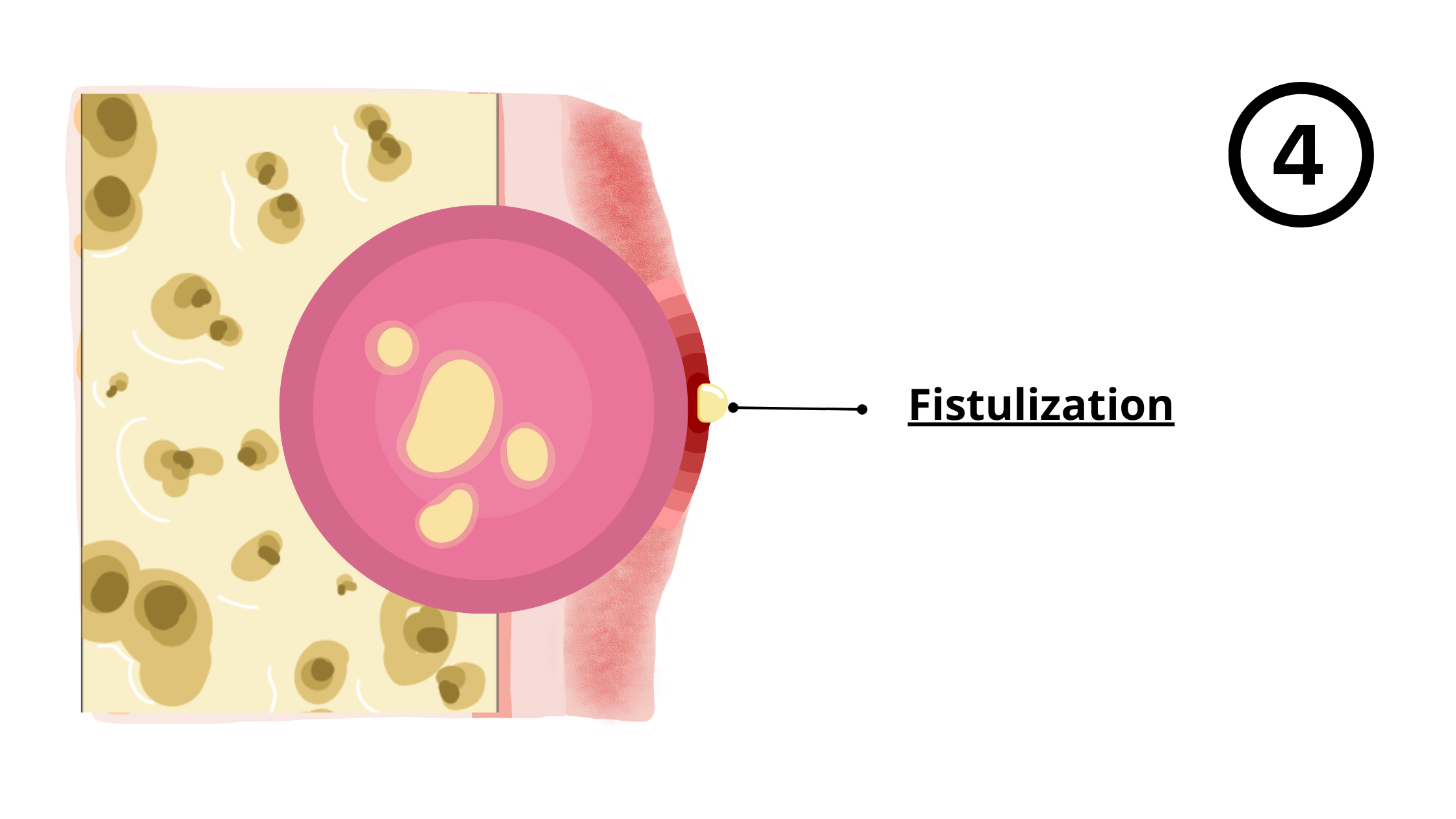
Can a wisdom tooth cyst turn into cancer?
Occasionally, the lining cells of a cyst around a wisdom tooth may give rise to a tumor, usually benign. The risk of an odontogenic cyst transforming into cancer is extremely low. Mouth cancers stemming from jaw cysts account for less than 1% of all cases.If you're wondering whether your growth is a cyst or something else, there is no way of knowing by symptoms alone. Only a biopsy followed by a microscopic examination can tell for sure.
But, certain features are specific to each condition and can give us a good hint, including the following:
Cysts:
- Fluid-filled cavities lined with cells.
- Grow very slowly over the years.
- Often well-defined in structure.
- Persist in the area where they first appear for a long time.
Cancer:
- Abnormal, uncontrolled growth of cells.
- Grow rapidly and uncontrollably.
- Irregular and poorly defined due to its aggressive and invasive nature.
- Tend to spread and destroy surrounding tissue.
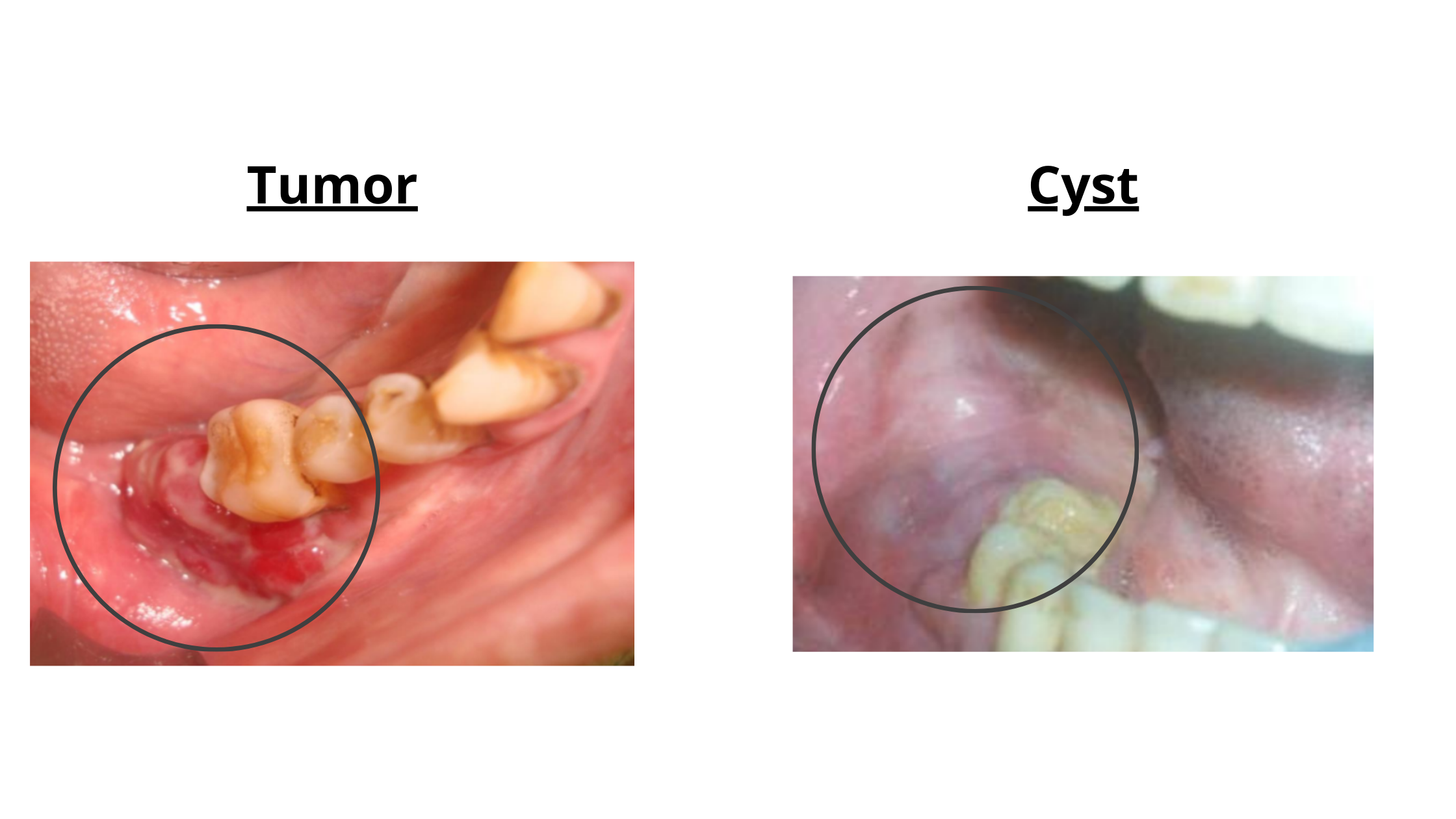
Treating a wisdom tooth cyst
The most common and effective treatment approach for cysts associated with wisdom teeth involves a surgical procedure to remove both the cyst and the affected tooth.Wisdom teeth are like extra teeth that don't serve much purpose. When they are badly positioned or don't have room to fit, they can cause many issues. So, removing them is the safest way to deal with the cyst and stop it from coming back in the future.
Can a wisdom tooth cyst come back after treatment?
The likelihood of a cyst returning after treatment varies depending on the type of cyst. Some, like odontogenic keratocysts, are more aggressive and have a higher potential to persist, while others, when appropriately treated, have little or no risk of recurrence.In the majority of cases of wisdom tooth cysts, recurrence is rare. It usually happens when the cyst is not entirely removed during the initial surgical procedure. In such cases, the leftover remains of the cyst may come together and cause a new problem later on.
- Apical Cyst Theory: a Missing Link - PMC (nih.gov)
- Prevalence of odontogenic cysts and tumors associated with impacted third molars: A systematic review and meta-analysis - PubMed (nih.gov)
- Odontogenic Cysts - StatPearls - NCBI Bookshelf (nih.gov)
- Developmental Odontogenic Cysts of Jaws: A Clinical Study of 245 Cases - PMC (nih.gov)
- Malignant changes developing from odontogenic cysts: A systematic review - PMC (nih.gov)